|
The House behind the Curia, also called Casa Basilicale (Basilical House) was erected during the reign of Hadrian, c. 120 AD (opus mixtum). The remains of three small houses from the republican period were found below it. The street to the north was therefore called Via delle Casette Repubblicane, Road of the Republican Houses. The facade had a layer of white plaster. Irregular remains of red paint were found, pointing to (commercial?) texts. In the centre of the facade is the entrance vestibule, next to a staircase. In the facade, flanking the vestibule, are two empty recesses for terracotta reliefs. These were either shop signs or religious reliefs with depictions of deities protecting the building and its inhabitants. Along the road are six shops. They were interconnected. The doors between the eastern shops were later blocked. The shops had a pavement of opus spicatum. To the south is a long courtyard, open to the sky except for the central part, that, like a bridge, connected the upper floors of the northern and southern part. The courtyard too was paved with opus spicatum. In the west wall is a huge hole, made at an unknown point in time by people in search of marble objects. In the eastern half of the courtyard is a well. Three rooms to the south received light from the courtyard through windows. Remains of mosaic floors suggest that these rooms were habitations. |
 Plan of the caseggiato. After SO I. |
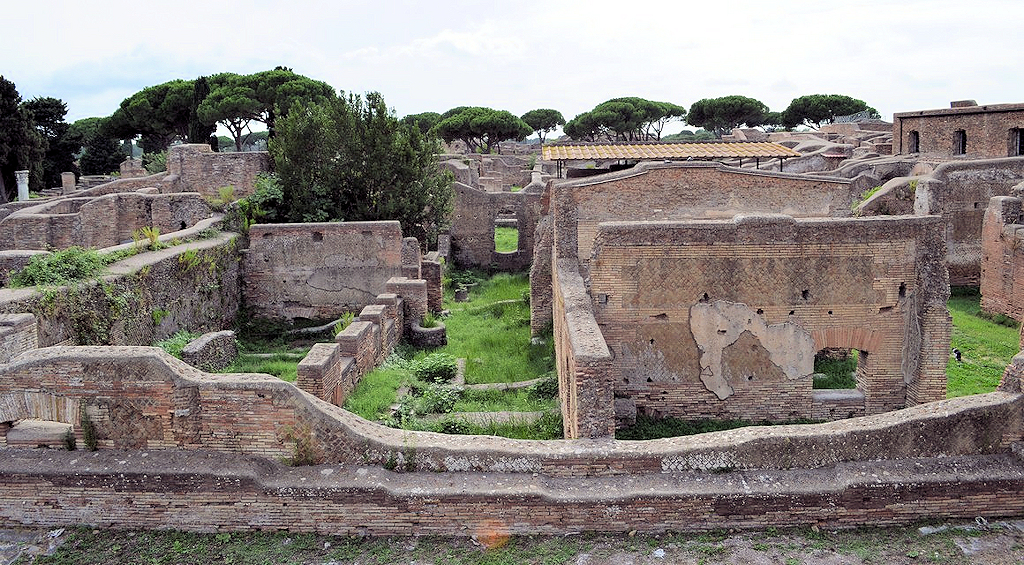
The building seen from the east, from the Capitolium.
Photo: Raffaella.
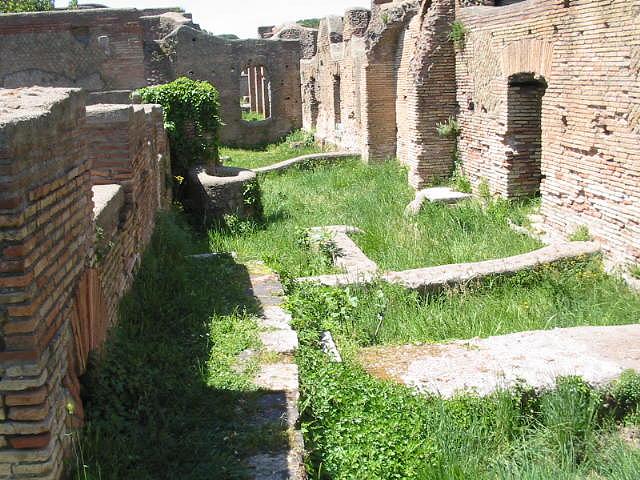
The central part of the building seen from the east.
Photo: Klaus Heese.
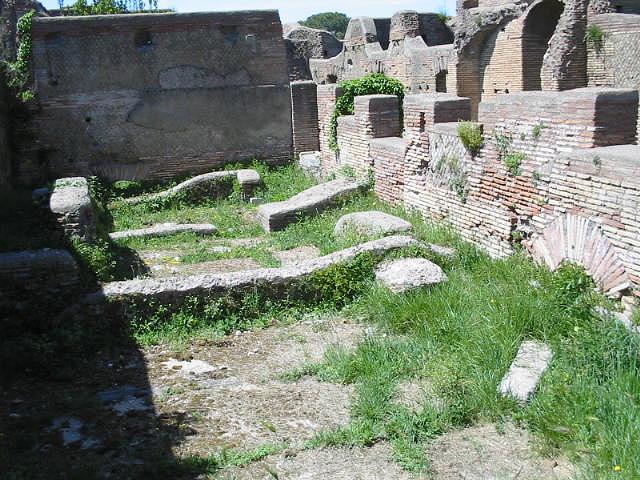
The south-east part of the building seen from the north-west.
Photo: Klaus Heese.
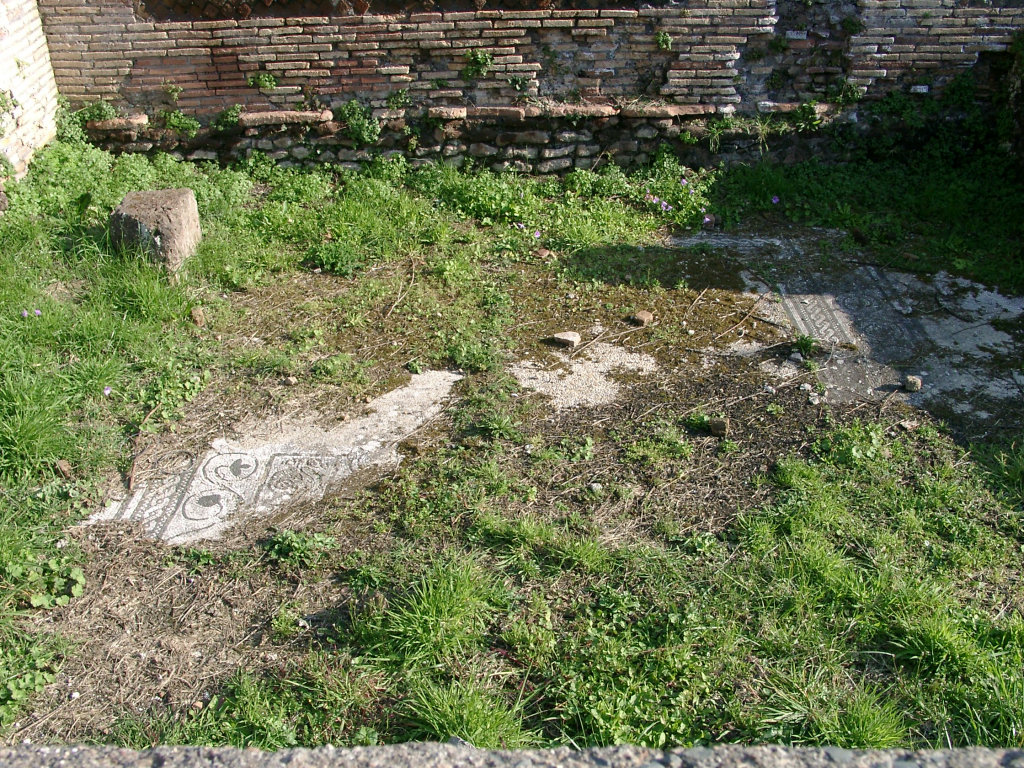
Remains of a mosaic floor.
Photo: Daniel González Acuña.
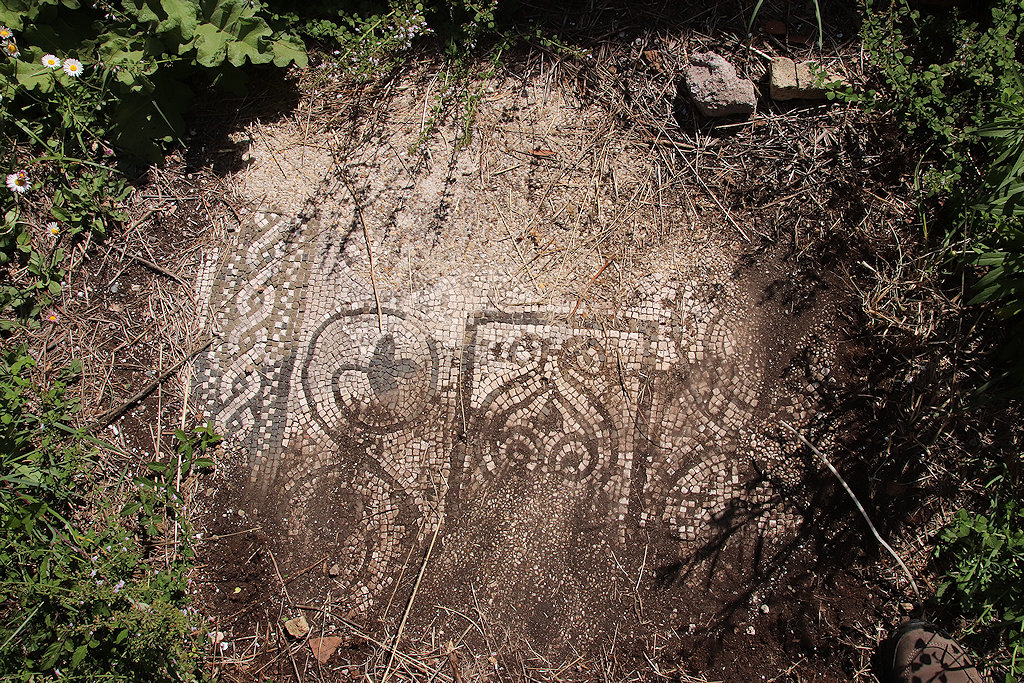
Detail of a mosaic floor.
Photo: Klaus Heese.

Reconstruction drawing of the courtyard, from the west.
From Calza 1923, Tav. VI,1.